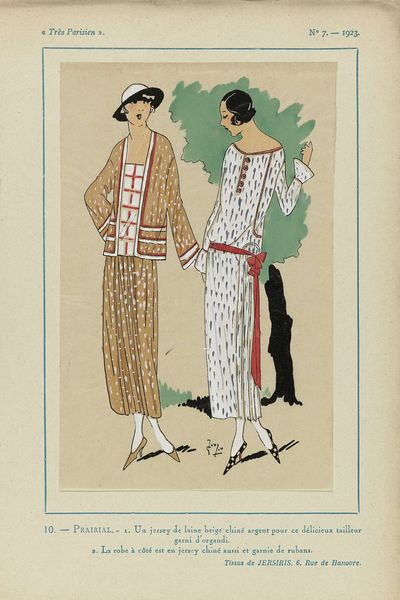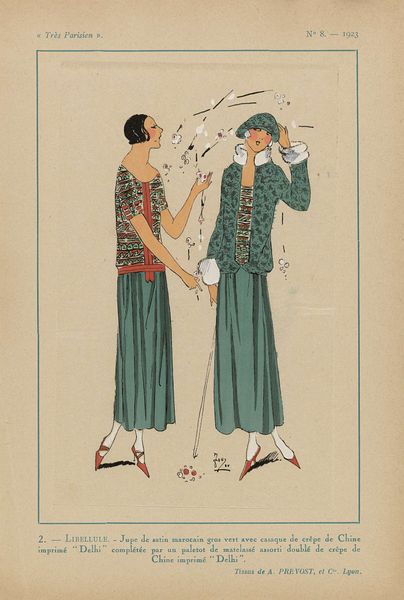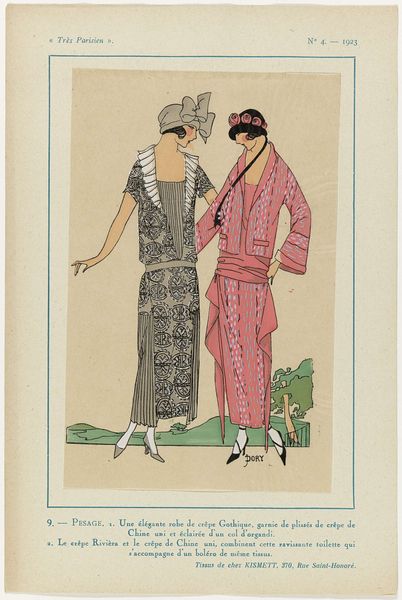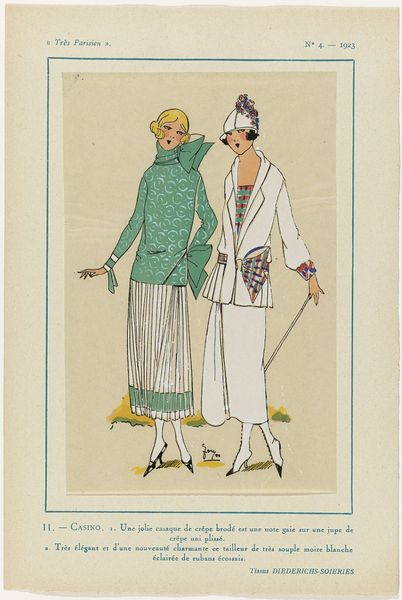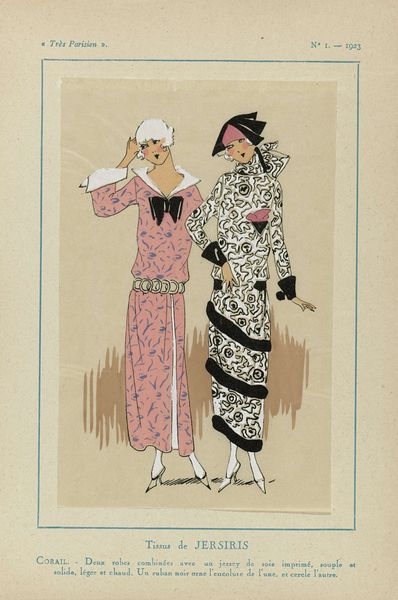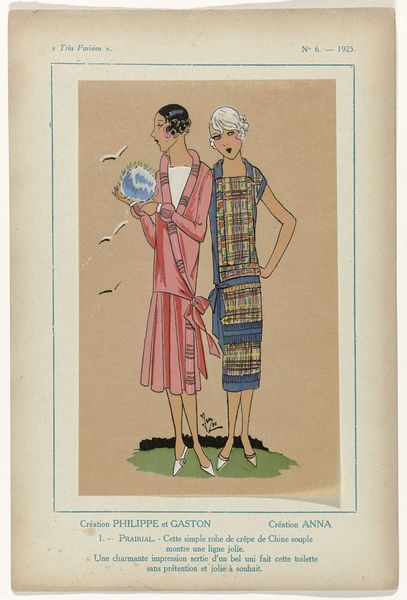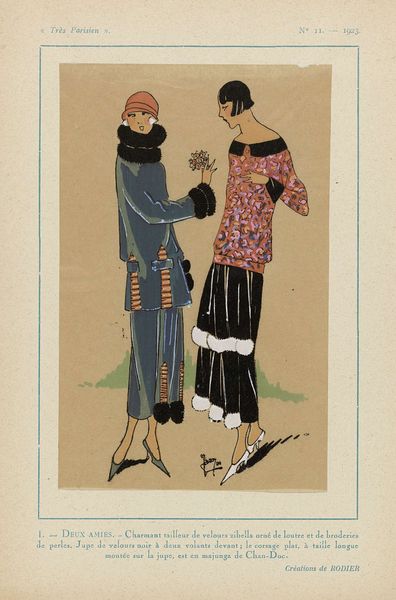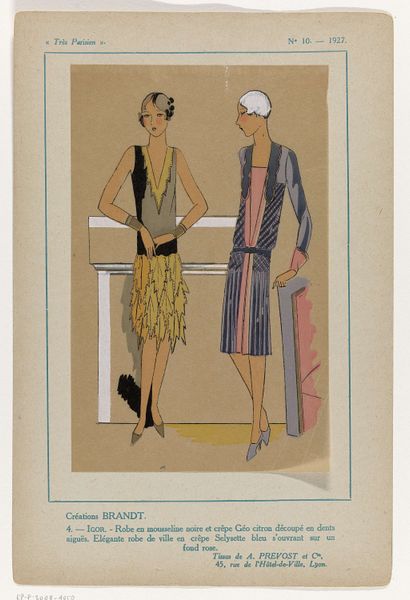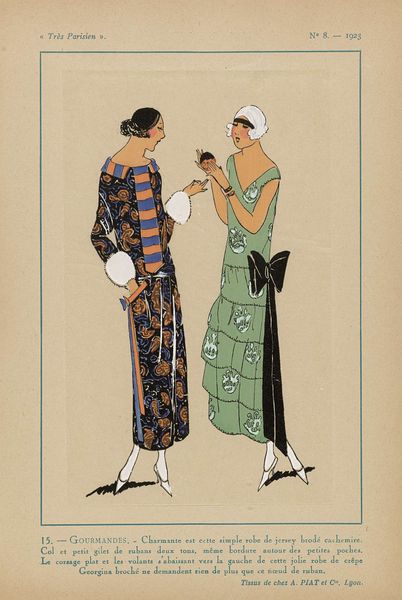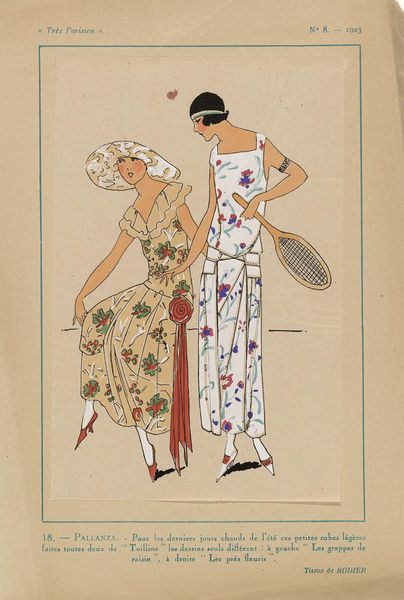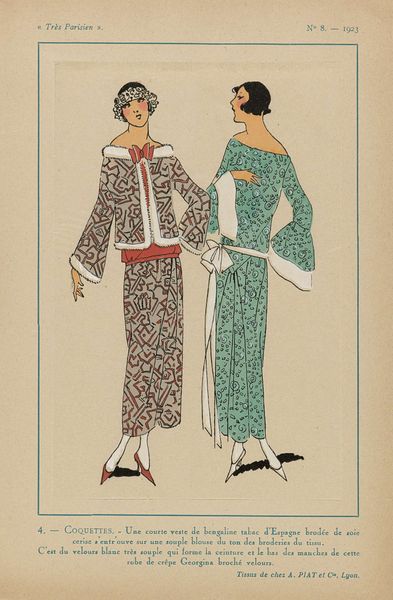
Très Parisien, 1923, No 7: 17.- JOURS DE CHALEUR. - 1. Robe de voile de coton... 1923
0:00
0:00
anonymous
Rijksmuseum
Dimensions: height 269 mm, width 180 mm
Copyright: Rijks Museum: Open Domain
Curator: Ah, the vibrancy of Art Nouveau distilled in a print. What strikes you first about this image? Editor: The flatness, the utter lack of perspective. It’s almost comical how deliberately two-dimensional the figures are. Though the title, printed directly onto the work itself, "Très Parisien," certainly gives it context. Curator: Indeed. We're looking at "Très Parisien, 1923, No 7: 17.- JOURS DE CHALEUR. - 1. Robe de voile de coton...", a print currently housed in the Rijksmuseum, if I recall correctly. The piece encapsulates a pivotal moment in decorative art. Note the stylized figures and the meticulous rendering of the clothing. Editor: They appear less like portraits and more like models showcasing garments; It resembles a fashion plate from that era. The women lack individualized features, which enhances the image's function as a design showcase. The contrast between the green dress patterned with dark flora and the straight white one lined in a cotton-candy pink feels deliberately harmonious despite being diametrically opposing aesthetics. Curator: Precisely. The artist has rendered the scene as if these textiles carry inherent significance, their patterns, trims, and materials serving as symbolic expressions themselves. Observe how negative space carves out detail and how outlines are reduced only where colour creates definition; it speaks to the semiotic intent of its design. Editor: That makes sense. In 1923, the Roaring Twenties were well underway, and consumer culture and artistic production became inextricably linked. This piece, with its attention to textiles and fashion, underscores how art both reflected and propelled societal shifts during this time. Curator: Exactly! Its emphasis on contemporary Parisian fashion mirrors the increased consumerism and commodification of art at that moment. It’s far more than just a depiction of dresses; it's a commentary on modern urban life. Editor: Well, from a historical vantage, seeing the object within that framework deepens the experience. Thank you for helping bring such depth into focus here today! Curator: And thank you for broadening its context—seeing beyond mere composition to comprehend the art as a sociocultural record enhances the dialogue itself!
Comments
No comments
Be the first to comment and join the conversation on the ultimate creative platform.
